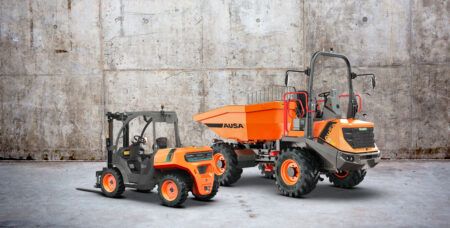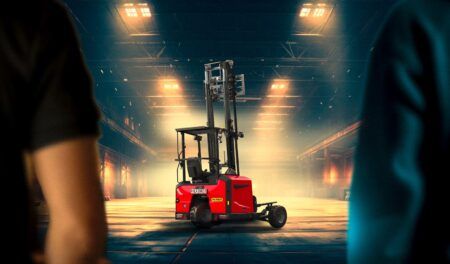Following a number of recent changes to directives and standards regarding explosion protection, Pyroban, Caterpillar’s customized components division specializing in explosion protection, has developed an infographic to easily explain the changes relevant to those buying or supplying a forklift truck.
The graphic summarizes these key points
ATEX Directive 2014/34/EU1
Introduced in April 2016, ATEX 2014/34/EU replaced existing ATEX Directive 94/9/EC and concerns equipment and protective systems intended for use in potentially explosive atmospheres. Its rules affect manufacturers, suppliers and importers those producing or bringing a product to the market when new.
What you need to know: Many fundamental elements of the Directive, including health and safety requirements and explosion protection level categories, are unchanged. However, suppliers must ensure new products are labelled with the updated ATEX Directive number and should be aware that the component level certificate is now called ‘EU Type Examination Certificate’.
ISO 3691-1:20112
The international standard for safety requirements and verification of industrial trucks such as forklifts, ISO 3691-1:2011 guides best practice for modifying forklifts with safety in mind, which includes explosion protection conversions.
What you need to know: Under this international standard, truck modification is not permitted without prior written approval of the original truck manufacturer in order to ensure all potential implications which may affect the overall truck safety have been considered. So in the case of explosion protection, even if a modified truck meets the requirements of the ATEX Directive, it may not comply with ISO 3691-1:2011 unless written manufacturer consent has been obtained.
EN1755:2015 3
This standard governs companies like Pyroban on the manufacture or conversion of forklift trucks to enable safe and compliant use in hazardous areas. A recent update took place to clarify and standardize the required safety measures which equip a truck for use in a potentially explosive environment.
What you need to know: The biggest change will be for equipment operating in Zone 2 classified areas where static electricity is now considered an ignition risk during “normal” operation. Therefore seats, arm rests, roll-up cabin sides and other externally accessible plastics need to be anti-static as a minimum. All tires (where travel speeds are >6km/h) on 3G trucks should now also be anti-static and there must be conductivity to earth either with two straps from the chassis to ground or by using conductive tires. The location and quantity of conductive tires or earthing straps should also be marked on the chassis.
For Zone 2 applications, the new EN1755:2015 requirements have maintained the core principles of the current standard and brought them into line with relevant latest standards. Gas detection is still included, but performance requirements are strengthened to achieve Performance Level PLc (EN13849)4 or SIL 1. Testing has also been redefined for Ex nR restricted breathing enclosures which require stronger sealing performance. Truck labelling has also been re-defined and the handbook requirements are more detailed.
Changes that affect all categories of equipment (2G, 3G, 2D and 3D5) include more detailed assessment of non-electrical components such as pumps and transmissions in line with EN134636. Safety control systems should also meet PLc or SIL 1.
“There are three areas that forklift suppliers and users should be aware of when specifying an explosion proof forklift truck,” said Steve Noakes, group engineering manager for Pyroban. “Explosion protected forklifts are used in a number of different industries, from chemicals and waste through to the food and drink supply chain, and these rules apply to all such operations with potentially explosive atmospheres.”
“Although we have summarized some of the key points from the standards, we encourage forklift buyers and suppliers to contact Pyroban for further advice and support on compliance with the latest legislation affecting explosion protected equipment.”
November 4, 2016




